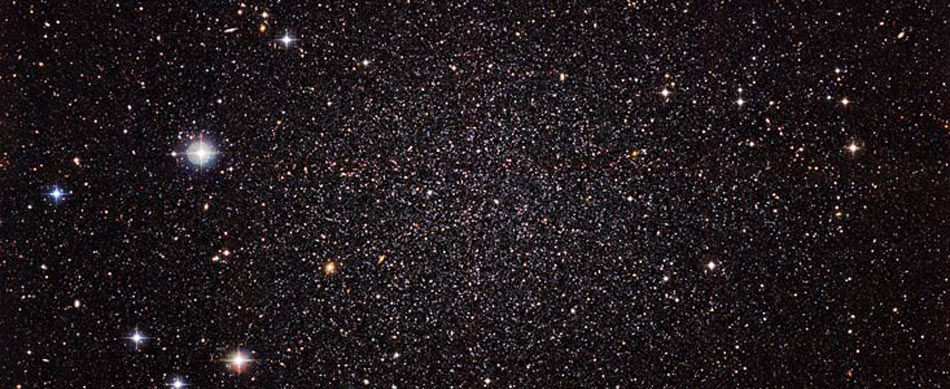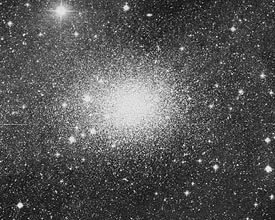Sculptor Dwarf Galaxy

Sculptor Dwarf Galaxy. image from the Wide Field Imager camera on the 2.2-meter MPG/ESO telescope at ESO's La Silla Observatory.

The Sculptor Dwarf Galaxy, also known as the Sculptor Dwarf Elliptical or Sculptor Dwarf Spheroidal, contains only 4% of the carbon and other heavy elements in our own galaxy, making it similar to primitive galaxies seen at the edge of the universe.
The large proportion of old stars makes the Sculptor Dwarf, and its proximity, makes it a prime target for studying the earliest periods of star formation. In a recent study, astronomers combined all the data available for the galaxy to create the most accurate star formation history ever determined for a dwarf spheroidal. This analysis revealed two distinct groups of stars in the galaxy. The first, predominant group is the older population, which is lacking in heavier elements. The second, smaller population, in contrast, is rich with heavy elements. This youthful stellar population is concentrated toward the galaxy's core.
The stars within dwarf galaxies, such as the Sculptor Dwarf, can exhibit complex star formation histories. But as most of these dwarf galaxies' stars have been isolated from each other and have not interacted for billions of years, each collection of stars has charted its own evolutionary course. Studying the similarities in dwarf galaxies' histories, and explaining the occasional outliers, will help to explain the development of all galaxies, from the most unassuming dwarf to the grandest spirals. There is indeed much for astronomers to learn from the Milky Way's shy neighbors.


